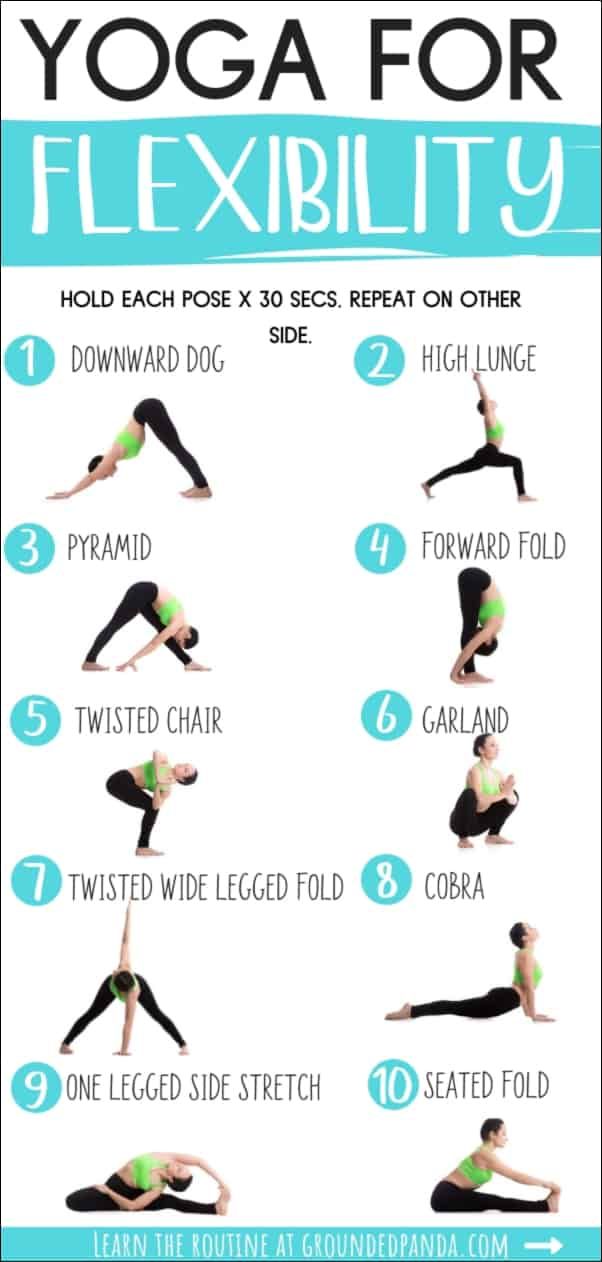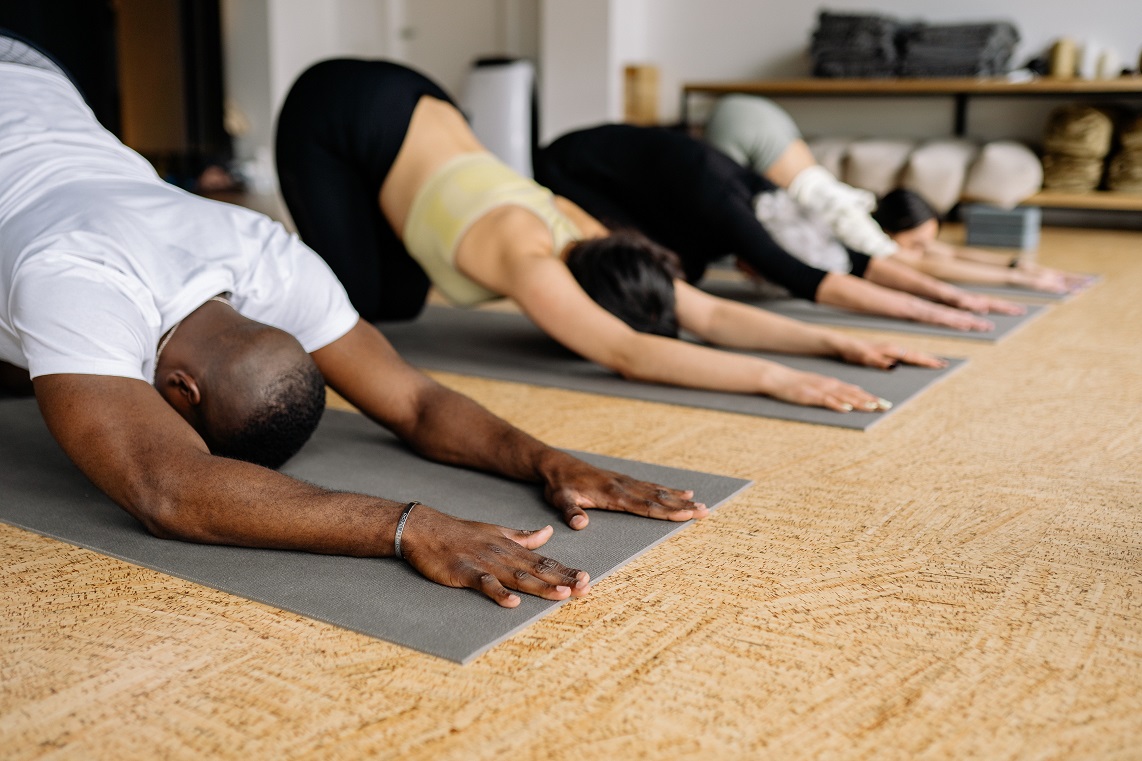
Fibromyalgia sufferers have many options for poses. Viparita Kanani, the first, is a way to lie flat on your stomach with your legs straight. As your hips and legs relax, the body's weight is lifted from the feet. This pose helps combat fatigue, one of the most common symptoms of a fibromyalgia flare-up. You can also sit for 10 minutes while performing this pose.
You can perform this pose by standing straight with your back straight. Then, place your left hand on the right knee and your right hand on the left. You should place your hands on the right knee and ankle of your right leg so that your right ankle rests on your left ankle. Hold the pose for a few minutes, and take deep breaths while releasing tension in your hips. This will strengthen your lower spine muscles. You can also sit if you have trouble doing the twist.

The seated position is the next yoga posture. For this position, you will need a flat chair. Your feet should touch the floor. Your ankles should reach under your knees. Your legs should bend at the hip. You should also rest your hands on a pillow, or some other support. You should remain seated for about three minutes. To make it easier to do, you can repeat the exercise a few times.
The warrior position is the first and most essential yoga pose. This is a powerful pose that stretches the body and helps improve stamina. This pose is great for strengthening your back and arms, which can help alleviate the pain of fibromyalgia. Although it may seem intense, this pose can be extremely beneficial to the body. If you have a stiff neck and back, you should try this pose. This pose will strengthen your back and arms, and give you the strength to do the poses.
Although there are many benefits to yoga for fibromyalgia it is important that you do it correctly. You should consider many benefits when you are considering yoga as a treatment for fibromyalgia. The first is that it is very effective in relieving pain and improving the body's circulation. It can also improve your mood and well-being.

Among the benefits of yoga are numerous. People with fibromyalgia are often plagued by chronic tension in their necks. These tension areas can be relieved by practicing yoga. This will help improve your mood and circulation. The right poses will help you enjoy the benefits of yoga for fibromyalgia.
FAQ
What is a good schedule for a 7-day work out?
A seven-day exercise program should consist of three days per week of cardiovascular training (running, biking, swimming), two strength exercises (using free weights, weight machines), and one flexibility/core workout (yoga, Pilates). It's essential to do each activity at least once a week. Maximum 45 minutes should be allotted for each session.
Cardiovascular Exercises: Swimming, Cycling, Running
The goal is to get in at least 60 minutes of cardio activities per week. To achieve the best results, aim to exercise for at least 75 minutes each week. Cardio exercise can stimulate blood flow and increase muscle growth.
Strength Training
While cardio exercises target the heart and lungs, strength training targets the muscles and bones. Strength training increases lean muscle mass and helps to burn calories even at rest.
Flexibility & Core Workouts
To strengthen your whole body, flexibility and core work outs are excellent ways to do so. Both yoga as well as Pilates are great choices.
Do I need to exercise every morning?
No! Get at least 30 minutes of moderate-intensity physical activity 5 days a week. This means that you should be able to walk fast enough to feel slightly out of breath, or bike hard enough to sweat.
How often should you exercise per week?
It all depends upon how much time you have and what type or exercise you prefer. You should do moderate-intensity aerobic exercise three to five days per week. It's important that you don't overdo it. You will get the maximum benefits from your workouts if you do not exercise consistently.
Which exercises are most effective for me?
It all depends upon your fitness goals. Some people prefer endurance sports like swimming, cycling, or running. Others love lifting weights or using resistance bars. There are many exercise programs on the market today. Pick the option that fits your needs.
Statistics
- The PRS enabled risk stratification for overall prostate cancer and lethal disease with a four-fold difference between men in the highest and lowest quartiles (HR, 4.32; 95% confidence interval [CI], 3.16-5.89). (pubmed.ncbi.nlm.nih.gov)
- 10 pounds in a month is likely during a lean bulking phase, especially for beginners. (muscleandstrength.com)
- Are You One of the 20% of Guys (mh.co.za)
- An estimated calorie range for moderately active adult males falls between 2,200 to 2,800 calories per day, depending on age. (eatright.org)
- Candidates and applicants must pass all four tests at 70% (minimum level) to graduate from Basic Deputy U.S. Marshal (BDUSM) Training. (usmarshals.gov)
External Links
How To
How can a man get fit in 30 days?
It is best to break down difficult goals in small, manageable steps.
You need to make sure you are working towards the goal each day. This could include anything from 10 pushups that last 5 minutes to running 3km.
You will notice positive results if this is done consistently over time.
Be consistent is key. Keep at it until success!
What is the main difference between Aerobic Fitness or Anaerobic Fitness
Anaerobic fitness describes the body's ability not to use oxygen to perform intense physical tasks. Anaerobic pathways can be used to supply enough energy during high-intensity exercise. Anaerobic pathways include glycolysis, creatine phosphate, the phosphagen, lactic acid, etc.
In contrast, aerobic fitness refers to sustaining continuous low-intensity exercise. While performing aerobic exercises, oxygen is used as the primary source of fuel for the cells. In other terms, the aerobic pathway has more energy that the anaerobic.
You need to build up your aerobic capability if you plan on running a marathon. If you are only focusing on increasing your anaerobic capabilities, you won't finish the race.
Aerobic fitness may also be known as cardiovascular fitness. The most common methods of determining cardiovascular fitness are step tests and VO2max testing.
VO2 Max Test
VO2max is the maximum oxygen (O2) that your body can use while exercising. This test measures the amount O2 that the body can use when exercising.
This test can measure your cardiovascular fitness accurately. It requires expensive equipment and highly-trained professionals to administer.
Step Tests
Step tests are a quick and easy way to test your cardiovascular fitness. Based on your age and weight, they involve running or walking on a track or treadmill for a specified time.
These tests are easy, inexpensive, and accessible almost anywhere. You can, for example, walk for 2 minutes on a treadmill, then rest for 1 min, then repeat the process for 20 minutes. Then, stop. Throughout the entire session, your heartbeat should stay within a set range.
This is the "Bruce Protocol". Bruce, himself a runner developed this protocol when he realized his heart rate didn't rise when he ran long distances.